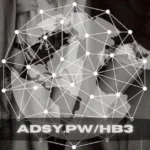Introduction
Imagine standing before a canvas so alive, it feels like it’s breathing history, culture, and hope right into you. That’s the magic of Basil Fomanka, a name that has quietly but powerfully woven itself into the tapestry of modern African thought. But who exactly is this creative force?
Who is Basil Fomanka?
Basil Fomanka is not just an artist; he’s a storyteller, a cultural ambassador, and a visionary whose work transcends borders. Hailing from Cameroon, his art explores the depths of African identity while challenging global perceptions. His canvases are more than paint—they’re conversations.
Why His Work Matters Today
In a world grappling with questions of identity, decolonization, and representation, Fomanka’s art stands as both mirror and beacon. He reminds us where we come from while urging us forward. His relevance today? Unquestionable.
Early Life and Influences
Childhood in Cameroon
Basil’s journey started in a small Cameroonian town where storytelling wasn’t a hobby—it was life. Growing up amid vibrant oral traditions and community rituals, he learned early on that every gesture, every mask, every drumbeat carried meaning.
Cultural and Artistic Foundations
From a young age, Basil immersed himself in the visual language of his people—beaded regalia, ceremonial sculptures, murals in sacred spaces. It wasn’t just art; it was identity, woven into the very fabric of community life.
The Role of Family and Community
His family played a pivotal role in nurturing his creativity. His grandmother’s folktales, his father’s woodcarving skills, and his mother’s textile patterns—all poured into his artistic DNA.
Artistic Journey
Transition from Traditional to Contemporary Art
Basil didn’t stay confined to traditional forms. As he matured, he blended these ancestral influences with contemporary techniques, creating a fusion of the old and new that challenges and delights audiences worldwide.
Major Artistic Themes
Identity. Memory. Migration. Spirituality. These aren’t just academic buzzwords in Fomanka’s work—they’re lived experiences, painted with raw emotion and intellectual depth.
Exploration of African Identity
He asks bold questions: Who gets to define “African art”? How do we honor our roots while embracing change? Through layered textures and symbols, Basil answers with nuance rather than slogans.
Fusion of Heritage and Modernity
Think of his art as a bridge—one foot firmly planted in tradition, the other stepping bravely into uncharted territory. It’s this balancing act that makes his work both timeless and timely.
Key Works and Achievements
Notable Art Pieces
Among his standout works are “The Mask We Wear”, a haunting exploration of public vs. private selves, and “Diaspora Dreams”, which maps the journeys of Africans across continents and histories.
Exhibitions and Global Recognition
From solo exhibitions in Paris to group shows in Johannesburg, Basil’s art has traveled farther than he ever imagined as a boy in Cameroon. His works grace museums, private collections, and academic syllabi around the world.
Philosophy and Inspiration
Fomanka’s View on African Identity
For Basil, identity isn’t static—it’s fluid, layered, sometimes messy. His art reflects the complexity of belonging in a postcolonial world, where past and present constantly negotiate space.
Bridging Past and Present
Through his visual metaphors, Basil invites viewers to “sit at the table with their ancestors” while envisioning the future. His art isn’t nostalgia—it’s dialogue.
Art as a Tool for Cultural Preservation
In his hands, the brush becomes a preservationist’s tool. Every motif, every symbol rescued from fading memory is his way of keeping culture alive for the next generation.
Impact on Modern African Thought
Redefining African Art in the Global Context
Basil Fomanka doesn’t fit neatly into “traditional” or “modern” boxes. He’s actively redefining what African art looks like on the global stage—without losing authenticity.
Influence on Young African Artists
Across the continent, emerging artists cite Fomanka as a mentor and muse. His workshops, talks, and mentorship programs empower young creatives to own their stories and challenge stereotypes.
Challenges and Controversies
Navigating Western Art Spaces
Breaking into Western art markets hasn’t been without struggle. Fomanka has faced exoticization, tokenism, and pressures to “perform Africanness.” Yet he’s remained unapologetically himself.
Balancing Authenticity and Innovation
Basil constantly walks the tightrope between honoring tradition and innovating. “I don’t want to replicate the past,” he once said, “I want to remix it.”
Personal Life and Values
Humility Behind the Fame
Despite accolades, Basil remains grounded. He credits his success not to individual genius but to “a community of ancestors, family, and fellow travelers.”
Advocacy and Community Engagement
Beyond galleries, Basil invests in local arts education, ensuring rural kids get access to creative tools. For him, art is activism.
Legacy and Future Influence
How His Work Continues to Inspire
Long after the paint dries, Basil’s art sparks conversation. Whether it’s about identity, diaspora, or memory, his work keeps asking questions that matter.
Institutional Recognition and Tributes
Today, universities study his art; cultural centers host retrospectives in his honor. His name is etched not just in the art world but in the broader narrative of modern African intellectual history.
Conclusion
In a world hungry for authenticity, Basil Fomanka’s art feeds both heart and mind. His legacy isn’t just in museums—it’s in the millions of lives touched by his vision. He’s proof that art, when rooted in identity and purpose, can inspire generations.






